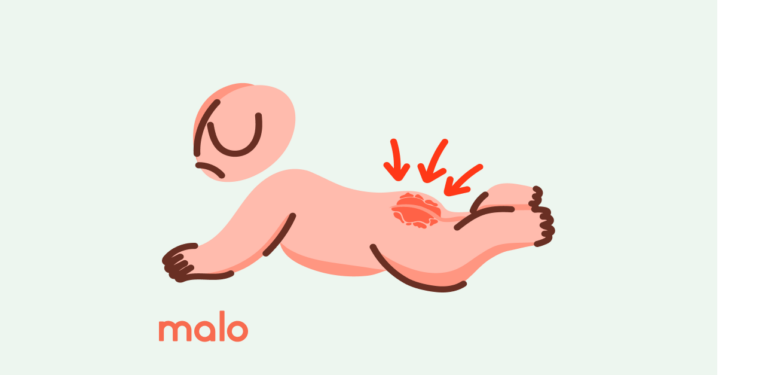The very first moments of a newborn’s life are a whirlwind of discovery for parents—from tiny grasping hands to that natural instinct to seek out comfort. But beneath these visible milestones, powerful neurological processes are quietly at work. The Galant reflex stands out among them, arising not just as a quirky newborn reaction, but as a key player in early development, posture, and coordination. Many parents, though attentive to growth and motor skills, find themselves perplexed when faced with labels such as primitive reflex or reflex integration. What does it really mean if this reflex persists beyond infancy? How much should families worry about its connection to movement, attention, or even bedwetting? Let’s explore the science behind the Galant reflex, its detection, and what practical steps can support your child—always respecting your family’s unique journey.
Understanding the Galant Reflex: The Science Beyond the Wriggle
The Galant reflex—sometimes referenced as the trunk incurvation reflex—emerges around the 20th week of gestation. Picture this: a gentle touch sweeping along one side of the lower back, and the tiny trunk naturally arches toward the stimulus. This isn’t simply a repetitive newborn quirk. Instead, it’s an indicator of a healthy developing nervous system—an automatic movement orchestrated by the central nervous system before conscious control exists.
Medical professionals test the Galant reflex by supporting the infant face down (ventral suspension) and lightly stroking down the spine, from shoulder to buttocks. The clinical response? A symmetrical, pronounced flexion of the trunk toward the side stroked. This reaction reflects the functioning of the vestibular system—the network of inner ear and brain structures managing balance and spatial orientation.
Interestingly, the Galant reflex also plays an active role during the journey through the birth canal, facilitating lumbar motion and rotation—a hidden choreography to herald a healthy start. As weeks turn into months, this reflex should gradually give way to voluntary, controlled movements, usually fading between three and nine months, replaced by more specific postural control mechanisms.
Why The Galant Reflex Matters: Foundations of Movement and Attention
Delve beneath the surface, and the importance of the Galant reflex reveals itself in layers. This primitive response is a cornerstone for future gross motor coordination. Pediatric researchers underscore its necessity in shaping early muscle tone, spinal flexibility, and the child’s ability to master fundamental milestones—rolling, crawling, sitting upright. The neural circuits established in this early window support motor planning and even contribute to bladder function, intricately linking the Galant reflex to sensorimotor integration.
Advances in neurodevelopmental science confirm: seamless integration of primitive reflexes like the Galant is associated with greater school readiness, focus, and adaptive behavior. When this reflex persists, however, subtle ripples can manifest—raising questions and concerns for attentive parents.
The Natural Timeline: When Should the Galant Reflex Disappear?
Curious about what’s typical? The Galant reflex should naturally fade away as the nervous system matures—usually sometime between three and nine months. By that point, a baby’s movements are becoming less automatic, increasingly coordinated, and under volitional control.
What if, as a parent, you still observe trunk arching or hip motion provoked by touch after nine months? Pediatricians and therapists often interpret persistent Galant reflexes as neurological immaturity—not a diagnosis in itself, but a useful clue. It can serve as a gentle warning sign, prompting further observation or assessment to preempt issues with reflex integration.
Spotting a Retained Galant Reflex: Signs, Symptoms, and When to Act
Vigilant parents often notice small but telling patterns. A retained Galant reflex can underpin everyday challenges—though the signs are rarely dramatic. Take a look at the most frequently reported symptoms:
- Persistent fidgeting, difficulty staying still, especially when seated
- Restlessness and hyperactivity
- Unexplained bedwetting (enuresis) beyond age five, resisting conventional strategies
- Unusual sensitivity to touch near the lower back (sometimes leading a child to squirm or avoid waistbands)
- Subtle postural changes: mild scoliosis, pelvic rotation, or ongoing slouched posture
- Apparent clumsiness, awkward gait, or skipped crawling phase
- Difficulty focusing or staying attentive in classroom settings
Ask yourself: Does your child avoid wearing particular clothing? Is sitting upright a struggle? Do simple motor tasks seem unusually difficult? These observations, when combined, can help healthcare professionals shape a more comprehensive understanding.
The Medical Perspective: Assessment and Differentiation
Both at home and in clinics, practitioners rely on direct yet gentle assessment methods. For concerned families, a simple sweep of a clean hand or rounded tool along the back while the child lays flat can provide clues. Still, interpretation requires expertise.
Healthcare professionals will conduct more thorough exams: checking for asymmetrical reaction, comparing left and right movements, and screening for overlap with other primitive reflexes—like the Moro reflex or asymmetric tonic neck reflex (ATNR). Each has its own trigger and response pattern:
- Galant reflex: Lateral trunk flexion following side-back stimulation
- ATNR: Fencing posture when head is turned; limbs extend on the face side, flex on the opposite
- Moro reflex: Sudden head movement triggers symmetrical arm flinging
Differentiating these is not just academic—it sets the direction for targeted therapies or at-home exercises, should they prove helpful.
Consequences of a Persistent Galant Reflex: Looking Beyond the Surface
Research in pediatric neurology draws clear connections. A non-integrated Galant reflex can make ordinary classroom experiences daunting, as children struggle to filter tactile input—each brush of a chair or waistband a potential distraction. The cascade continues: postural instability, compromised posture control, muscle imbalances, and, rarely, the onset of mild scoliosis—all have been reported in association.
A poignant area, too, lies in developmental pediatrics: ongoing studies are investigating correlations with ADHD symptoms and broader sensory processing difficulties. While not every child with a persistent Galant reflex faces such hurdles, staying attentive to early signs fosters timely intervention and prevents compounded frustration.
Root Causes and Risk Factors: Why Does the Galant Reflex Linger?
Not all babies shed these early-life reflexes at the same rate. Medical literature highlights several risk factors associated with persistent primitive reflexes, including:
- Cesarean sections (C-section)—potentially less tactile feedback compared to vaginal birth
- Preterm birth, low birth weight, neonatal illnesses, or low Apgar scores
- Restriction of free movement in the neonatal period (e.g., limited tummy time)
- Chronic illness or stressful early life environments, affecting overall neurodevelopment
- Missed or delayed motor milestones, such as rolling or crawling
- Nutritional deficits or prolonged hospitalization
Understanding origin points empowers families to tailor support, creating rich sensory experiences and maximizing opportunities for proprioceptive and vestibular system development.
Practical Strategies: Supporting Healthy Reflex Integration
Feeling proactive? Many interventions are both gentle and family-centered. Here’s what early intervention specialists and occupational therapists recommend:
- Consistent tummy time from the newborn phase
- Encouraging crawling, rolling, and supported sitting as developmentally appropriate
- Sensory play: gentle textures, back rubs, light vibrations, and “snow angel” floor exercises
- Introducing proprioceptive input through play—balancing, crawling tunnels, or swinging activities
If challenges persist, a pediatric physical or occupational therapist can offer customized exercise routines or sensory protocols, often yielding measurable gains over several months. Educational kinesiology and digital resources—such as interactive apps—continue to expand these supports for families, making home-based routines both engaging and evidence-based.
The Connection to Learning and Attention Challenges
One lingering question often troubles parents: Could the Galant reflex explain learning or attention difficulties? Pediatric neuropsychology research is increasingly attentive to this possibility. When a child’s brain is busy filtering uncomfortable tactile signals from the lower back, simple tasks—listening, reading, writing—may feel disproportionately difficult. Postural instability makes focusing, not to mention sitting still, a twice-daily struggle.
That said, every child travels a unique developmental path. Multiple factors shape focus and school performance—no one reflex tells the entire story. Still, identifying a retained Galant reflex opens the door to targeted support, restoring both comfort and self-confidence.
Clinical Care: Working Alongside Professionals
A partnership between parents and healthcare providers can transform concerns into actionable plans. Medical professionals—pediatricians, developmental specialists, therapists—bring nuanced assessment and help prioritize interventions. Progress is often tracked through regular follow-ups: has postural control improved? Are motor milestones falling into place?
Empowering families with knowledge, providing tools for daily observation, and ensuring access to resources make all the difference. Open communication builds trust and better outcomes—offering reassurance that, while challenges may arise, responsive care remains within reach.
Key Takeaways
- The Galant reflex is a foundational primitive reflex supporting early posture, coordination, and vestibular system development in infants.
- Normally, this reflex fades as voluntary motor control matures, most often between three to nine months.
- A persistent Galant reflex can reveal itself through fidgeting, restlessness, bedwetting, postural challenges or difficulties with focus.
- Early identification paves the way for gentle exercises, sensory play, and tailored interventions that help children build comfort and confidence.
- No single sign or reflex defines your child’s journey: diverse influences shape development, so compassionate observation and teamwork are key.
- Medical professionals and therapists are invaluable partners, offering assessment, support, and practical solutions.
- Many parents find added peace of mind and guidance through digital health resources—explore the Heloa app for personalized advice, expert-backed tips, and free child health questionnaires that make it easier to support your child, step by step.
Parenthood can be a mosaic of questions and discoveries—each child writing a story all their own. With patience, evidence-based support, and trusted collaborators, the path to healthy development is one every family can nurture.
Questions Parents Ask
Can the Galant reflex be present in adults?
Although the Galant reflex is a normal part of infant development, it is not typically found in adults. If this reflex persists beyond early childhood, especially into adulthood, it may signal an underlying neurological issue or a developmental concern. In such cases, it is important to consult with a healthcare professional for a thorough assessment. Remember, each situation is unique and many factors can influence neurological reflexes across the lifespan.
What does a positive Galant reflex test indicate in an older child?
When a Galant reflex remains present in an older child, it can sometimes point to a delay in the integration of primitive reflexes. This situation may be associated with challenges in posture, movement coordination, or sensory processing. It’s important to consider this as one piece of a broader developmental picture. If there are concerns, reaching out to a specialist can help to clarify the next steps and provide reassurance.
Is the Galant reflex different in preterm infants?
Preterm infants might show variations in primitive reflexes, including the Galant reflex. Their responses might be less distinct or slightly delayed due to ongoing neurological maturation. This is common and, most often, preterm babies gradually catch up as they grow. Regular follow-ups with healthcare providers help to monitor their development and provide the support needed for each family’s particular circumstances.









